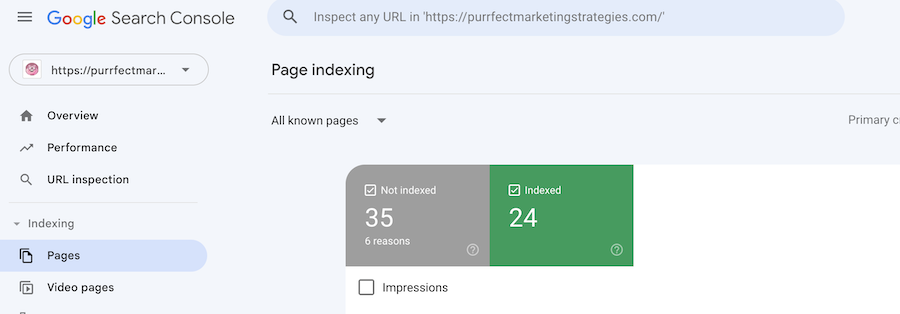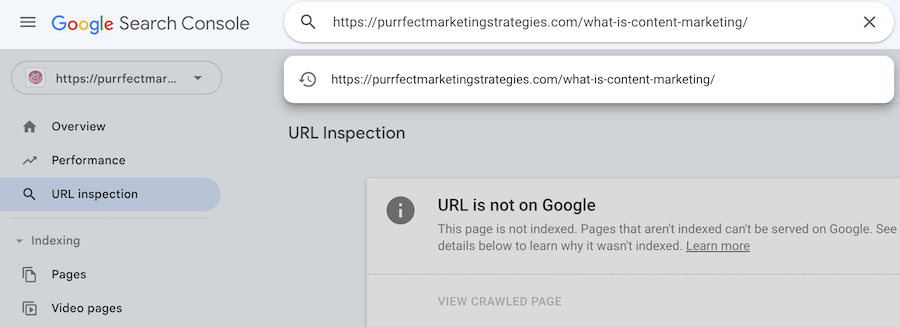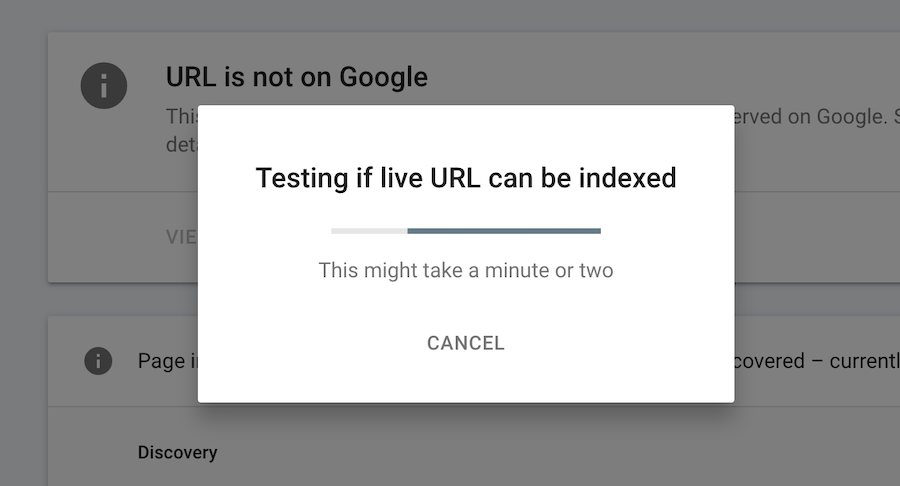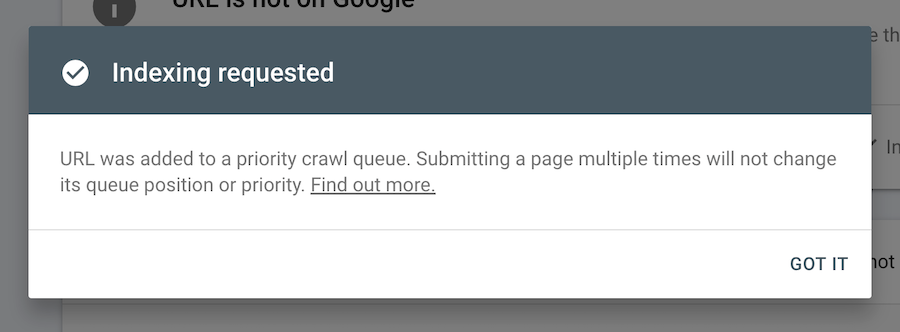Here’s a step-by-step guide on how to achieve faster indexing using Google Search Console.
In the article titled “How Long Does Google Search Console Take to Index?” I discussed the method of expediting page indexing by submitting pages individually. While this approach doesn’t ensure instant indexing, it can prove effective in certain situations, particularly when specific pages have been overlooked by Google for an extended period.
How To Get A Page Indexed With The Inspection Tool In Google Search Console
- Log in to Google Search Console:
In the left-hand menu, click on “URL inspection” under the “Index” section.

2. Enter the URL:
Enter the URL of the page you want to inspect and submit for indexing in the provided text box at the top of the page.

3. Run the Inspection:
Click the “Enter” key or the “Inspection” button to proceed. The tool will then fetch and inspect the specified URL.
4. Review the Inspection Results:
The tool will display the results of the URL inspection, including the status, indexing information, and any issues or enhancements found.
5. Request Indexing:
If the URL is not indexed or needs updating, and the inspection results are satisfactory, click on the “Request indexing” button.



If you request more than 15 pages or so in a day it will tell you that you exceeded the quota and you will need to try again.
If you have many pages you can simply resubmit the sitemap.
6. Monitor the Request:
After requesting indexing, you can monitor the status of your request in the “Pages” report in Google Search Console.
How To Get Your Pages Indexed Faster
Typically, Google aims to index new pages within a few days to a few weeks. However, this timeline is not set in stone and can be influenced by several elements:
- Website Structure and XML Sitemap: A well-structured website and an XML sitemap can aid in faster indexing. You can always expedite the process by creating and submitting an XML sitemap to Google, which provides a roadmap for the bots to discover and crawl the website efficiently.
- Social Media: Additionally, sharing the website’s URL on social media and obtaining backlinks from reputable websites can help in speeding up the indexing process as Google will recognise your site is a brand and not a standalone site.
- Website Size and Authority: Larger and more authoritative websites tend to get indexed more quickly due to their established credibility.
- Content Quality and Relevance: High-quality, relevant content is more likely to be indexed faster.
- Internal and External Links: Pages with many internal and external links are easier for Googlebot to discover and index.
- Server Speed and Accessibility: A fast-loading website that is easily accessible to Google’s crawlers will be indexed more swiftly.
Occasionally, website administrators may overlook the fact that certain pages are not indexed, often because of underlying problems. To prevent this, it’s important to regularly inspect Google Search Console for potential issues affecting your pages and take steps to resolve them.
Common issues that can affect indexing include:
Crawl Errors, Robots.txt Blockage, Noindex Tag, Canonicalization Issues, Sitemap Errors, Redirect Chains, URL Parameters, Mobile Usability Issues, Security Issues, duplicate, or irrelevant content issues, soft 404 Errors or site speed, among others.
I have faced quite a few of the GSC issues above and I have documented the process to fix some of them, so here are some useful articles if you ever come across them:
Common Indexing issues in Google Search Console and how to solve them.
How to Fix the “Deceptive Site Ahead” Error: how I managed to get rid of it
I hope this short post on how to achieve faster indexing using Google Search Console was useful, my human friends.
Stay curious and pounce back here for more marketing magic, my purr-fect pals!
Moxie

